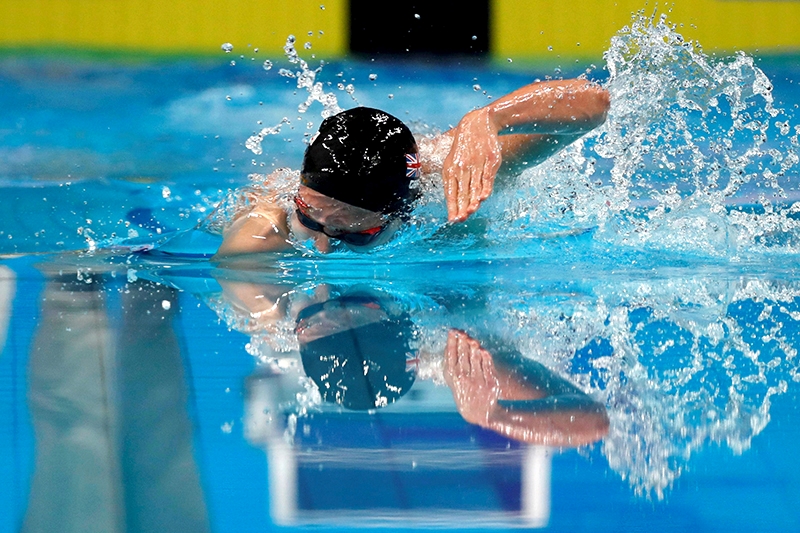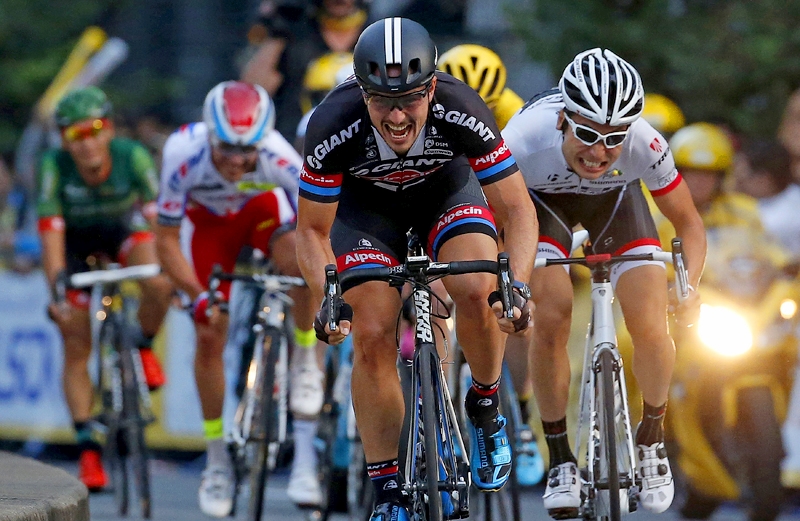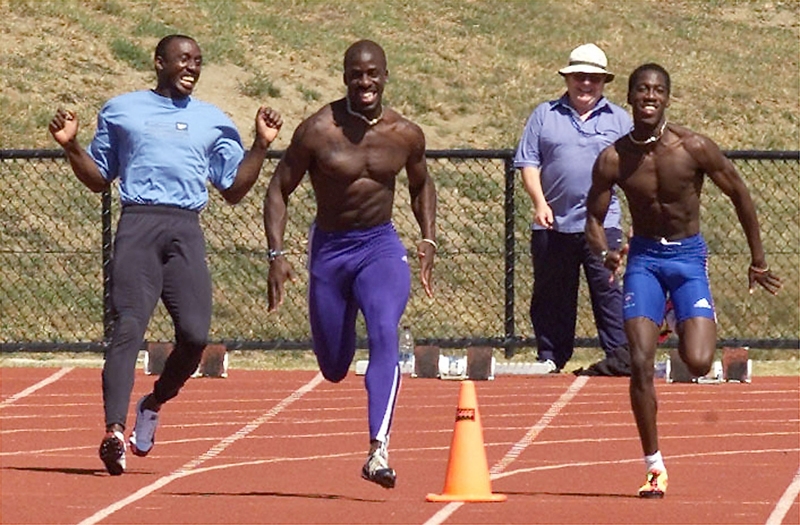You are viewing 1 of your 1 free articles. For unlimited access take a risk-free trial
High-intensity intervals: increasing benefits of decreasing durations!

High-intensity interval training is a proven and time efficient method of improving endurance fitness. With that in mind, Andrew Hamilton looks at some brand new research on how it could be made even more effective
If you’re a regular subscriber to Sports Performance Bulletin articles, you’ll almost certainly be aware of the huge amount of research that has accumulated into using interval training – particularly high-intensity intervals - as a method of improving fitness. One of the most appealing aspects of high-intensity interval training (HIIT) for endurance performance is that studies have shown it can produce significant fitness gains in less time and with less overall training effort (loading) than a higher volume of steady-state endurance training. Moreover, the benefits aren’t restricted to elite athletes; the benefits of HIIT can be realised by all sportsmen and women – even those with far more modest ambitions.How long, how hard?
One of the biggest questions about interval training (including HIIT) is how a session should be put together for maximum fitness gains? There are many variables to that come together when constructing an interval session. These include(1,2):- Interval duration – how long should each work interval be?
- Interval intensity – how hard should each work interval be (this can be measured in terms of speed, power or heart rate)?
- Interval numbers - how many intervals should the session contain?
- Rest duration – how long should each rest period in between each work interval be?
- Rest type – active or passive
- Total interval training time per week
The HIIT approach
If we now consider HIIT as a mode of interval training, we can see why it is so effective; the intense nature of the intervals in a session means that an athlete performing them will experience a more rapid rise and greater increase in heart rate during each interval, which will mean a greater time proportion of each interval will be spent above 90% maximum heart rate. Of course, in very intense intervals, each interval duration will be likely be shorter than a lower-intensity interval session, so the total time accumulated above 90% maximum heart rate might not be that much greater. However, as a proportion of the total work performed, HIIT provides an excellent way of ensuring an effective training stimulus.Of course, this still begs the question: what is the best recipe for a HIIT session? Are more 15-second intervals better than fewer 30-second intervals? How many intervals (of whatever length) are needed? Many HIIT protocols now recommended are based on pioneering work back in 1996 by a Japanese researcher called Izumi Tabata at the National Institute of Fitness and Sports in Kanoya, Japan – results since validated by more recent research(6). When Tabata published the results of his study on the effects of high intensity interval training (HIIT), he showed that just 8 x intervals of 20 seconds of work interspersed with 10 seconds of rest produced excellent gains in fitness. In particular, he demonstrated that his HIIT protocol:
- #Achieved very substantial gains in aerobic capacity (cardiovascular fitness);
- #Produced anaerobic (speed/power) benefits for athletes that could not be achieved with steady state aerobic exercise alone;
- #Required less time to produce the equivalent gains observed in other types of interval training;
Diminishing HIIT intervals
In this study, Italian scientists set out to design and test an HIIT protocol that would generate high heart rates (ie ensure the subjects were working at a high percentage of their maximum oxygen uptake capacity (VO2max) for substantial periods of time but without exhaustion setting in(8). The protocol was constructed using two well-established principles:- To improve maximum oxygen uptake (VO2max – the single most important determinant of endurance capacity), a training protocol should prolong the time at which the oxygen uptake remains close to maximum – ie 90-95% VO2max(9).
- HIIT is a very effective method of maintaining the metabolic rate near ̇VO2max(10).
On what basis were these interval lengths adjusted? Well, the underlying theory used to determine interval length relies on the fact that CP is mathematically defined as the ‘power asymptote of the hyperbolic relationship between power output and time to exhaustion’. The mathematics involved is beyond the scope of this article (readers who seeking a deeper understanding are advised to consult this paper from the literature) but basically it suggests that an HIIT protocol that aims to maximally stimulate ̇VO2max should start with long work intervals (2–4 minutes) to quickly increase ̇VO2 but then, when the subject approaches exhaustion, shorter intervals should be employed in order to help to prolong the exercise for longer while simultaneously preventing the ̇VO2 from decreasing too much.
Putting the theory to the test
That’s the theory, but does this approach work in practice? To test their hypothesis, the researchers set up a study using 12 well-trained cyclists. The cyclists performed three separate HIIT sessions on three different occasions. Importantly, each session generated the same amount of total workload, and used the same ratio of work to recovery. However, the sessions were structured differently consisting of:- *Long-interval HIIT: 3 minutes of work, 2 minutes of recovery
- *Short-interval HIIT: 30 seconds of work, 20 seconds of recovery
- *High-intensity decreasing intervals: work interval lengths starting at 3 minutes duration decreasing to 30 seconds, recovery starting at 2 minutes reducing to 20 seconds
Figures 1-3: Different HIIT protocols on test



Top = long HIIT intervals; middle = short HIIT intervals; bottom = decreasing HIIT intervals. The dotted lines represent the breath-by-breath oxygen uptake data averaged every five seconds. The dashed lines represent the threshold of 90% of ̇VO2max (the intensity at which training produces maximal fitness gains). The solid lines represent the actual power outputs of the cyclists during the session.
The key findings from the study were as follows:
- The decreasing HIIT session enabled the cyclists to maintain a greater total of time above 90% VO2max (the threshold above which training is deemed to be most effective for boosting endurance). In the decreasing HIIT protocol, the cyclists accumulated an average of 312 seconds above 90% VO2max compared to 182 and 179 seconds in the short and long HIIT protocols respectively.
- The decreasing HIIT protocol also enabled the cyclists to accumulate more total work above critical power (22.0KW decreasing HITT, 19.2KW long HIIT, 18.7KW short HIIT).
- The cyclists achieved higher lactate levels in the decreasing HIIT protocol (8.03mmol/L in decreasing vs. 5.69mmol/L in short and 7.85mmol/L in long) indicating they had generated higher levels of intensity. Importantly however, this increased intensity was generated without any increase in perceived exertion!
What do these findings mean in practice?
A cursory glance at figures 1-3 show clearly that the decreasing HIIT protocol rapidly generated 90% VO2max in the cyclists, and then maintained that intensity pretty much all the way to the end of the session. This was not observed in the other two protocols – particularly the short HIIT session. It should be pointed out that while most of the cyclists responded really well to the decreasing HIIT protocol, not all achieved quite such high levels of time accumulated over 90%VO2max. The researchers speculated that this may have been because the cyclists who responded less well were less accustomed to performing lactate-generating sessions. This would have meant that they were less efficient at clearing the accumulated lactate after the first (long) interval, which interfered with their recovery before the shorter intervals. This suggest that a decreasing HIIT protocol is likely to be more suited to athletes who are already accustomed to performing more traditional longer interval sessions, which generate higher levels of lactate. We need to bear in mind too that this study didn’t go onto look at whether a series of decreasing HIIT sessions over a number of weeks improved markers of fitness more than traditional HIIT protocols. However, this would almost certainly be expected given the evidence we already have about accumulating time above 90% VO2max(5).Short race preparation
When could decreasing HIIT be of particular use to an athlete? The researchers went onto speculate that decreasing HIIT might be particularly helpful in training when the aim is to maintain a high ̇VO2max and/or maintain a specific power or velocity as long as possible, such as when preparing for shorter distance events (up to around 10 minutes’ duration – eg 3,000m on the track, 800m freestyle in the water or shorter time trials on the bike). If an athlete’s aim is to finish the race in a given time, the most specific training would be to ride at that velocity for that race time for a distance as near as possible to the distance of the race. After a short recovery, he/she should repeat for a shorter distance. Then after another shorter recovery, repeat for a shorter distance still, and so on – ie a decreasing HIIT protocol. Over time, fewer and eventually no recoveries would be needed – ie maintaining the target pace throughout.Try it for yourself
HIIT is a proven method of obtaining excellent fitness gains in a time-efficient manner. However, this new research suggests that a standard ‘constant-interval’ approach, while effective, can be made even better, especially if you are already engaged in high-intensity interval training. If you want to try this approach, the precise protocol is as follows:- *3 minutes at high intensity and 2 minutes at low intensity
- *2 minutes at high intensity and 1 minute 20 seconds at low intensity
- *1 minute at high intensity and 40 seconds at low intensity
- *45 seconds at high intensity and 30 seconds at low intensity
- *Finally, 30 seconds at high intensity and 20 seconds at low intensity
- *Repeat step above until volitional exhaustion of the subject
Remember though, this protocol generates high intensities, so should be used sparingly (no more than 1-2 times per week). Also, it may be less suitable for athletes who are unused to training using high-lactate sessions.
References
- Sports Med. 2002, 32, 53–73
- J. Strength Cond. Res. 2007, 21, 188–192
- J. Strength Cond. Res. 2013, 27, 1974–1980
- J. Med. Sci. Sports 2013, 23, 74–83
- Sports Med. 1986, 3, 346–356
- J Physiol Sci. 2019 Jul;69(4):559-572
- J Sci Med Sport. 2019 Aug;22(8):941-947
- European Journal of Applied Physiology Aug 2020 doi.org/10.1007/s00421-020-04463-w
- Sport Med 1986 3:346–356
- Sport Med 2013 43:313–338
Newsletter Sign Up
Testimonials
Dr. Alexandra Fandetti-Robin, Back & Body Chiropractic
Elspeth Cowell MSCh DpodM SRCh HCPC reg
William Hunter, Nuffield Health
Newsletter Sign Up
Coaches Testimonials
Dr. Alexandra Fandetti-Robin, Back & Body Chiropractic
Elspeth Cowell MSCh DpodM SRCh HCPC reg
William Hunter, Nuffield Health
Keep up with latest sports science research and apply it to maximize performance
Today you have the chance to join a group of athletes, and sports coaches/trainers who all have something special in common...
They use the latest research to improve performance for themselves and their clients - both athletes and sports teams - with help from global specialists in the fields of sports science, sports medicine and sports psychology.
They do this by reading Sports Performance Bulletin, an easy-to-digest but serious-minded journal dedicated to high performance sports. SPB offers a wealth of information and insight into the latest research, in an easily-accessible and understood format, along with a wealth of practical recommendations.
*includes 3 coaching manuals
Get Inspired
All the latest techniques and approaches
Sports Performance Bulletin helps dedicated endurance athletes improve their performance. Sense-checking the latest sports science research, and sourcing evidence and case studies to support findings, Sports Performance Bulletin turns proven insights into easily digestible practical advice. Supporting athletes, coaches and professionals who wish to ensure their guidance and programmes are kept right up to date and based on credible science.













